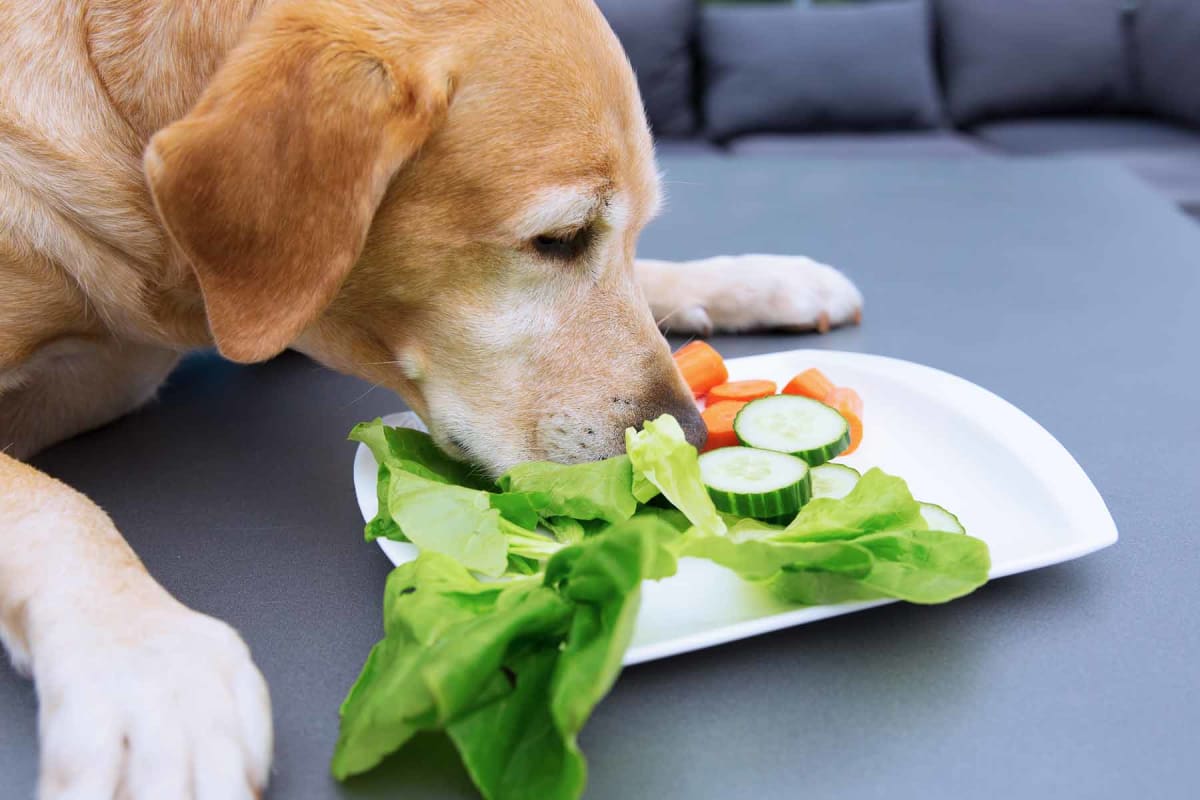
Can dogs eat lettuce?
Can dogs eat lettuce?
Can dogs have lettuce?
If you're prepping a salad and spot your pup eyeing those leafy greens, you might wonder, "Can dogs eat lettuce?" The short answer is yes, dogs can safely enjoy lettuce in moderation. But, like any treat, there are a few important guidelines to follow to keep your furry friend happy and healthy
Is lettuce good for dogs?
Most lettuce is over 90% water, making it a low-calorie treat that's especially refreshing in warm weather. While it's not as nutrient dense as some other veggies, lettuce does offer small amounts of vitamins A, C, and K, plus fiber and iron.
These nutrients can support your dog's immune system, vision, and digestion, though the benefits are modest.
Can dogs eat kale?
Kale is a leafy green that's best avoided for dogs. Although it contains vitamins and minerals, kale also has compounds like isothiocyanates and calcium oxalate. These can irritate your dog's digestive tract and may contribute to kidney or bladder stones if eaten in large amounts. It's safest to skip kale as a treat.
Can dogs eat arugula?
Arugula is generally safe for dogs in small quantities. Like lettuce, it's low in calories and contains some vitamins and minerals. Just be sure to introduce it gradually and watch for any signs of digestive upset, as every dog reacts differently to new foods.
Can dogs eat romaine lettuce?
Romaine lettuce is one of the best lettuce options for dogs. It's more nutrient-rich than iceberg lettuce, offering higher amounts of vitamin A, vitamin C, and iron. Chop it into small pieces to make it easier for your dog to chew and digest.
What about spinach?
Spinach is not toxic to dogs, but only offer it in very small amounts. Spinach contains high levels of oxalic acid, which can interfere with calcium absorption and may cause kidney issues over time. If you do give your dog spinach, make it an occasional treat and keep the portion tiny.
When is lettuce bad for dogs?
Lettuce is generally safe, but there are a few risks to keep in mind:
Digestive upset: Too much lettuce can cause diarrhea or stomach upset due to its high fiber content.
Choking hazard: Large pieces can be hard to chew or swallow, especially for small dogs. Always chop lettuce into bite-sized pieces.
Bacterial contamination: Unwashed lettuce may carry bacteria like E. coli or Listeria. Wash thoroughly before serving.
Allergies or intolerances: While rare, some dogs may be sensitive to lettuce. Introduce it slowly and monitor for any reactions.
Toxic add-ins: Never feed lettuce mixed with salad dressings, onions, garlic, or other ingredients toxic to dogs.
How to safely feed lettuce to your dog
Follow these guidelines to safely incorporate lettuce into your dog's diet:
Wash lettuce thoroughly to remove dirt, pesticides, and bacteria.
Chop or shred into small, manageable pieces to prevent choking and aid digestion.
Serve plain—no dressings, oils, or seasonings.
Offer lettuce as an occasional treat, not a meal replacement.
Consider steaming lettuce lightly if your dog has trouble digesting raw leaves.
Whenever you feed your furry friend something new, keep a close eye on them afterward. Monitor your dog for signs of an adverse reaction like stomach discomfort, itchiness, or hair loss.
How much lettuce can I feed my dog?
Lettuce should only make up a small part of your dog's diet—treats (including veggies) should be no more than 10% of their daily calories. As a general guideline:
Small dogs: Up to ½ cup per day
Medium-sized dogs: Up to 1 cup per day
Large dogs: Up to 2 ¼ cups per day
Start with a small amount and see how your dog tolerates it. If you notice any digestive upset, reduce the portion or discontinue.

Other safe treat options
If you're looking for other healthy treats for your dog, there are many other vegetables dogs can eat, including carrots, green beans, cucumbers, and cooked sweet potato. To add even more variety, consider including some tasty fruits that are safe for dogs in their treat rotation, such as blueberries, pineapple, or apple slices.
Always introduce new foods gradually and consult your vet if you have concerns about your dog's diet. And remember, when it comes to treats, moderation is key for a happy, healthy pup.